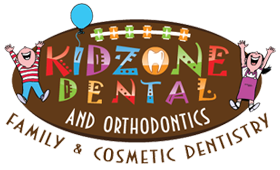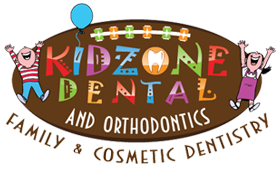Care after local anesthesia administration in mouth
- After local anesthesia the tongue, teeth, lips, gums, cheeks and surrounding tissues will be numb or asleep.
- Often, children are unfamiliar with the feeling of numbness and try to “check out” or “explore” the areas and in doing so may chew, scratch, suck, or play with the numb lip, tongue, or cheek. This may cause minor irritations to severe injuries depending on the extent of insult to the tissues. The tissues may swell up bleed and may even slough. These injuries typically take a long time to heal.
- To prevent such and injury, please monitor your child closely for approximately two hours following the appointment. It is often wise to keep your child on a liquid or soft diet until the anesthetic wears off and all the sensations come back.
Please do not hesitate to call the office if there are any questions.
Care after Trauma to the face or teeth
- Please keep the traumatized area as-clean-as possible.
- Call our office immediately to see when can you bring the child over.
- Pick up any broken or fallen teeth from the ground and save them in cold milk till you arrive at the office.
- Apply Ice packs during the first 24 hours to keep the swelling to a minimum.
- Avoid sweets or foods that are extremely hot or cold.
- After the emergency treatment at our office, the traumatized teeth would need to be followed up for a certain time. You can help us in determining if there is any further treatment needed.
- Watch for darkening of traumatized teeth, gum boils or loose teeth in the area of trauma. This could be an indication of a dying nerve (pulp) or infection. If infection is noticed – call the office so the patient can be seen as-soon-as possible.
- Maintain a soft diet for two to three days, or until the child feels comfortable eating normally again.
- If antibiotics or pain medicines are prescribed, be sure to follow the prescription as directed.
Please do not hesitate to call the office if there are any questions.
Care after Extraction
Please look up “Care after Local anesthesia administration in mouth”. It is very important. Healing should be uncomplicated if the following precautions are followed carefully.
Bleeding: Minor bleeding may persist for several hours up to a day following the surgery. If brisk bleeding occurs:
- Remove any loose clots from the mouth with a piece of gauze.
- Fold a piece of sterile gauze (provided by our office) and place over the surgery site. If gauze is not available, a teabag is an adequate substitute.
- Bite firmly on the gauze for at least 30 minutes. DO NOT chew on it. Repeat, if necessary.
- If brisk bleeding continues, call your dentist. A small amount of blood in a mouthful of saliva looks like a mouthful of blood.
- Do not suck on surgerized area or drink through a straw during the first 24 hours.
Rinsing and Brushing:
- Do not spit or rinse surgery site until the day after surgery.
- At that time, mix ½ teaspoon warm salt water in a full glass of water and rinse gently after meals and bedtime.
- Brush remaining teeth carefully to prevent infection. Brush tongue also.
Eating:
- Eating nutritious food is necessary to promote healing.
- Intake should be limited to liquids and soft foods on the first day then gradually returning to a regular diet as comfort permits.
Pain & Swelling: Some swelling is normal; do not become alarmed.
- Place ice on face over the affected site for 20-30 minutes of each hour during awake hours of first day. This may help reduce pain and swelling. Place ice in a plastic bag, moist cloth or other suitable container. Do not use ice after the first 36 hours.
- For pain, give Children’s Tylenol, Advil or Motrin according to the instructions on the bottle regarding the age and weight of the child. DO NOT give child aspirin. DO NOT hold aspirin over painful sites. Aspirin causes severe burns to the tissue of the mouth. If pain persists beyond 2-3 days, contact our office as further treatment may be necessary.
Care after Sealants
- By blocking the deep pits and fissures, sealants prevent plaque and food from packing on the biting surfaces of the teeth, thus decreasing the risk of decay . Since, the areas on the side and between the teeth cannot be coated with the sealants good oral hygiene and nutrition are still very important in preventing decay next to these sealants or in areas not covered by them.
- Have you child refrain from eating ice or hard candy, which tend to fracture the sealant. Regular dental appointments are recommended in order for your child’s dentist to be certain the sealants remain in place.
- The American Dental Association recognizes that sealants can play an important role in the prevention of tooth decay. When properly applied and maintained, they can successfully protect the chewing surfaces of your child’s teeth.
- A total prevention program includes regular visits to the dentist, the use of fluoride, daily brushing and flossing, and limiting the number of times sugar-rich foods are eaten. If these measures are followed and sealants are used on the child’s teeth, the risk of decay can be reduced or may even be eliminated!
Oral Discomfort after a Cleaning
A thorough cleaning unavoidably produces some bleeding and swelling and may cause some tenderness or discomfort. This is not due to a “rough cleaning” but, to tender and inflamed gums from insufficient oral hygiene. We recommend the following for 2-3 days after cleaning was performed :
- A warm salt water rinse 2 – 3 times per day (1 teaspoon of salt in 1 cup of warm water).
- For discomfort use Children’s Tylenol, Advil, or Motrin as directed for the age of the child.
Please do not hesitate to contact the office if the discomfort persists for more than 7 days or if there are any questions.
Care for Appliances/Space Maintainers/Partial Dentures/Tongue Crib
| Tongue Crib | The purpose of this appliance is to remind or prevent a thumb or finger habit and to prevent the tongue from pushing against the upper teeth while swallowing. Your child should not be led to think that this appliance is a form of punishment; rather it is in the mouth as a reminder. |
| Partial Denture | The purpose of the “Fixed Partial Denture” is to restore all the functions of the child’s missing teeth (chewing, speech, swallowing, maintaining the space for permanent teeth and appearance). |
| Space Maintainer | The purpose of this appliance is to maintain/save the space for the un-erupted permanent tooth. |
Please look up the details of these in the information section. With all appliances, please note the following directions :
- The appliance should fit snugly without causing any pain or gum irritation.
- Your child should NOT play with or try to remove the appliance. The appliance should only be removed by this office.
- Avoid sticky and hard candies.
- You may expect a slight change in speech and possible drooling for a short period of time, but this is normal and will shortly pass.
- Teeth should be brushed in the usual manner to keep them completely clean.
- It is most important that the six month preventative follow-up appointment be kept to avoid damage to the appliance or pain to the gums and attached teeth. Do not hesitate to call our office should there be any unusual discomfort or any concerns about the appliance(s) or treatment.
Careful selection of the Diet
Promote healthy eating habits including the regular meals, snacks and drinks. Look up our FAQ for details.
Please avoid these items as they will cause new cavities and/or pull off crowns and sealants:
|
|
And anything else that is Sticky and Hard.




